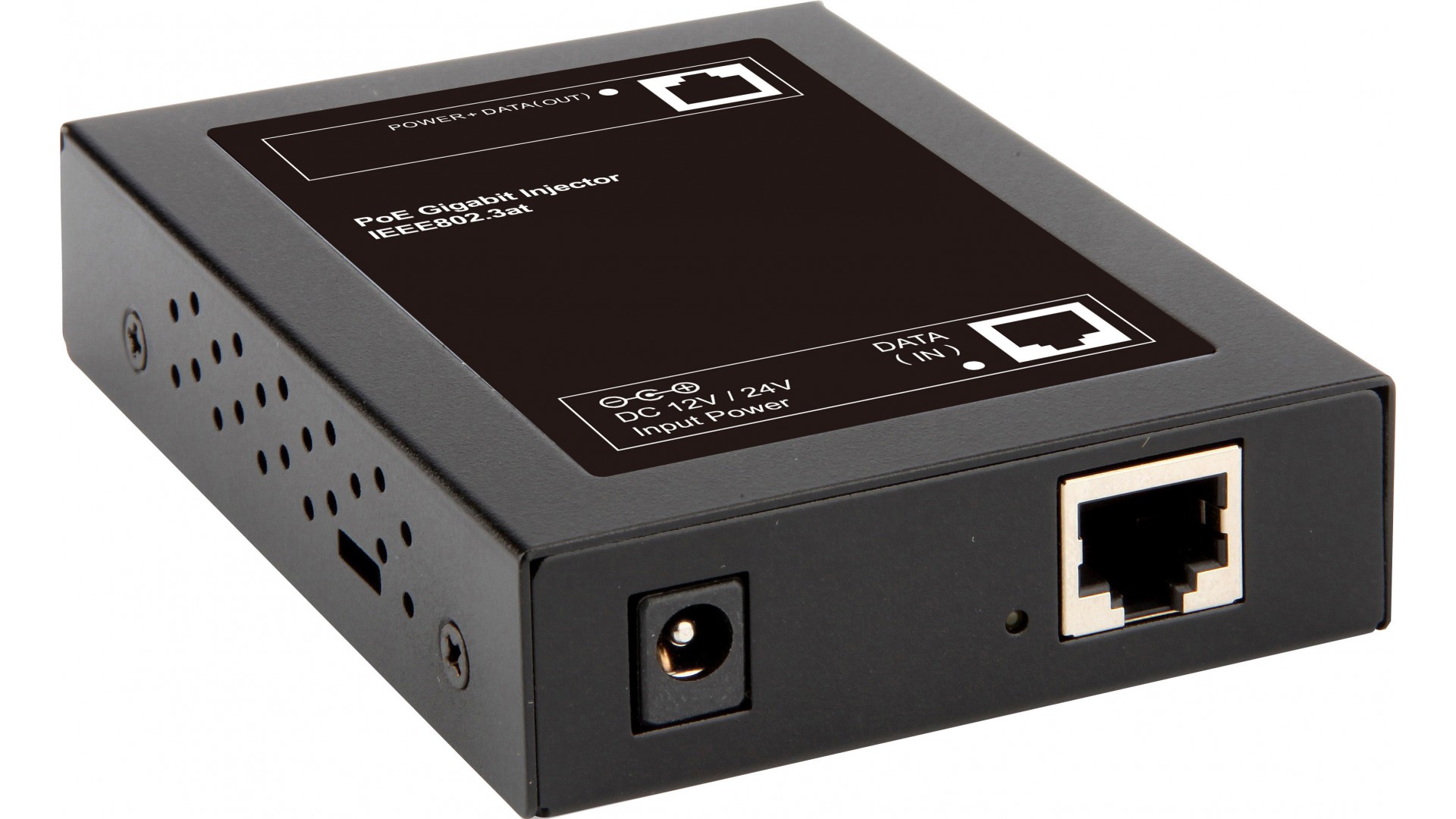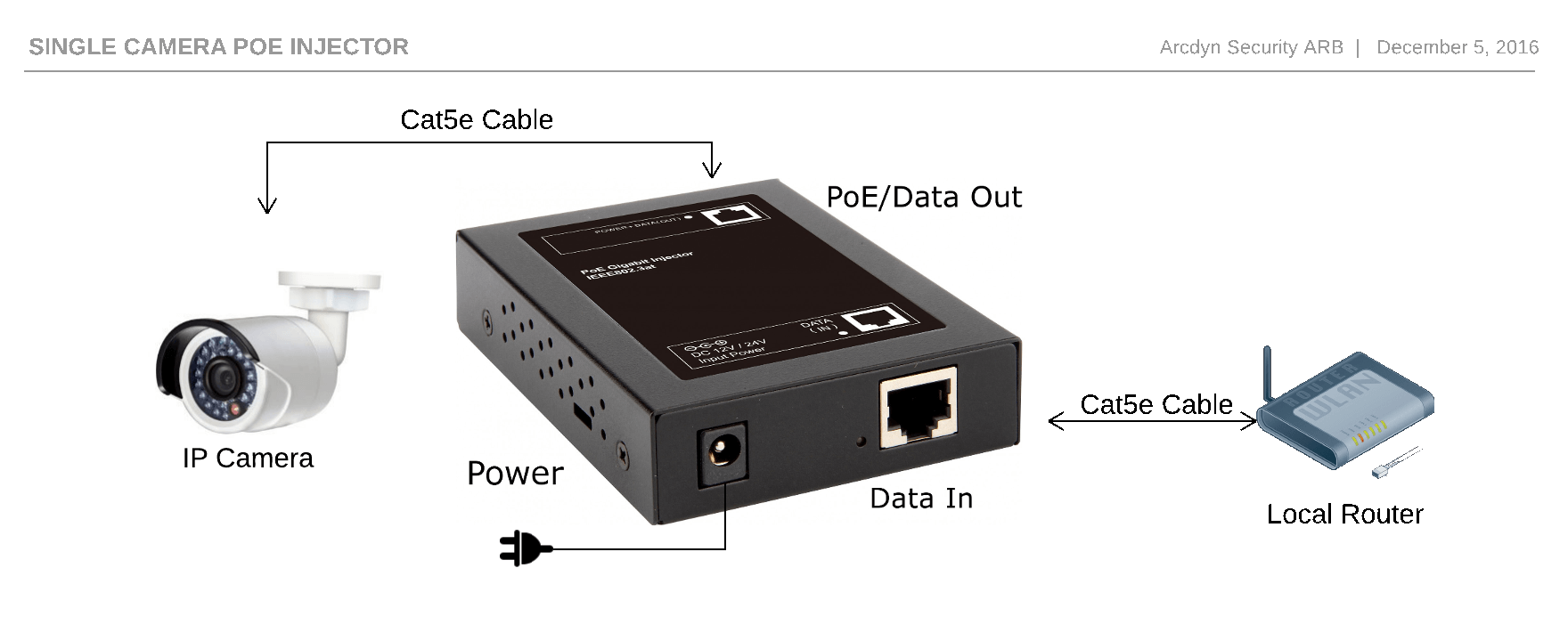How to use a PoE injector and IP Security Camera
Overview
Power over Ethernet is commonly referenced as PoE for short. PoE is a method of transferring power along with data on twisted pair Ethernet cabling(cat5e, cat6, etc). Various styles of PoE devices exist but this article will focus on how a PoE injector works, and how to setup that device properly.
What does a PoE injector do?
A PoE injector supplies power to a security camera by "injecting" power into the Ethernet cable. Typically speaking, a PoE injector will plug into a standard wall outlet and then convert the alternating current(AC) into Direct Current(DC) so it can be power the low voltage network security camera. A PoE injector will almost always have two RJ45 Ethernet ports, one will be labeled Data in and the other port will be labeled PoE/Data Out. Let's take a look at each port and what it does.

Data In Port
The Data In port is used to connect the security camera to the local network. In most cases, this will be your home router, the NVR camera port, or a network switch. Without this port connected the camera will be unreachable from the local network.
PoE/Data Out Port
The PoE/ Data out port does two things, it provides power to the camera and also completes the network so data transmission can be complete. Without this port connected the camera will not power up, and will not connect to the NVR/network.
PoE Standards
Two major standards exist currently for PoE devices 802.3af & 802.3at.
802.3af
PoE standard provides up to 15.4 W of DC power. This is the older standard of the two but many cameras will have this as a listed specification still.
802.3at
PoE standard also known as PoE+ or PoE plus, provides up to 25.5 W of power and is backwards compatible with 802.3af devices. With the increased power budget in the PoE+ standard, IP security cameras were now able to expand into the PTZ market.
Summary
The typical use of a PoE injector will require 3 devices.The PoE injector itself, A connection to the network, usually a router, or a switch, and the device that requires the PoE injector in this case an IP security camera.

